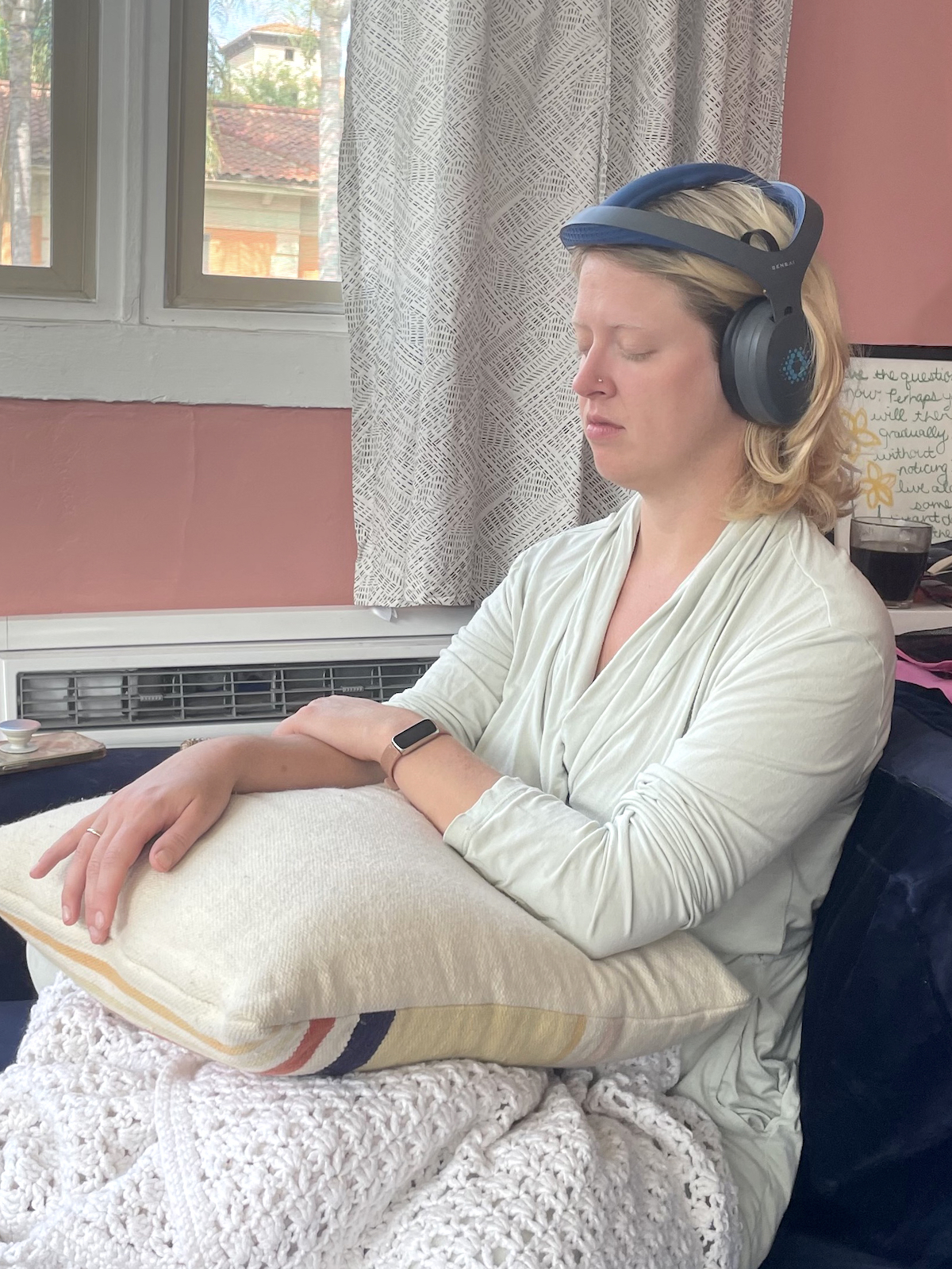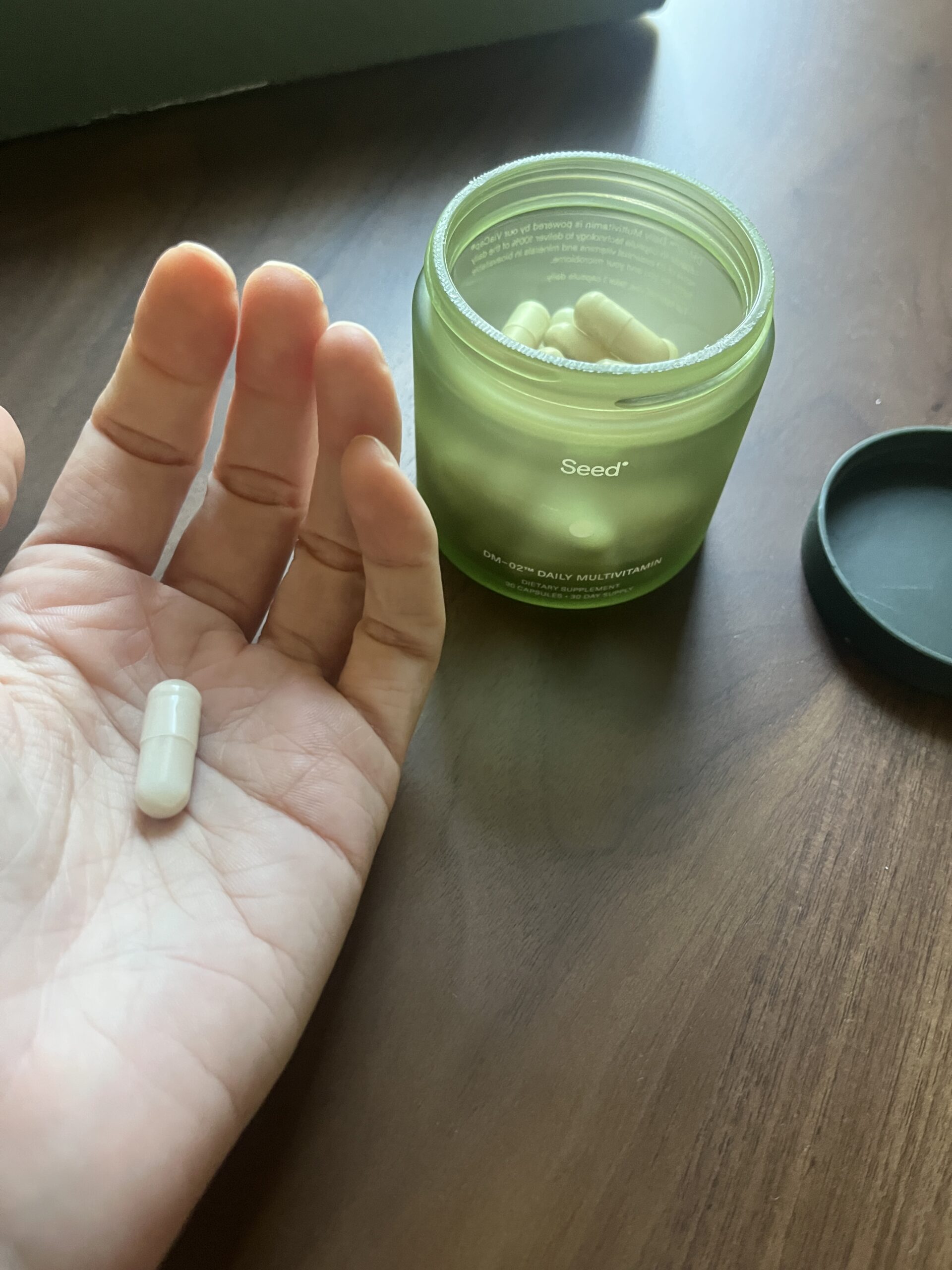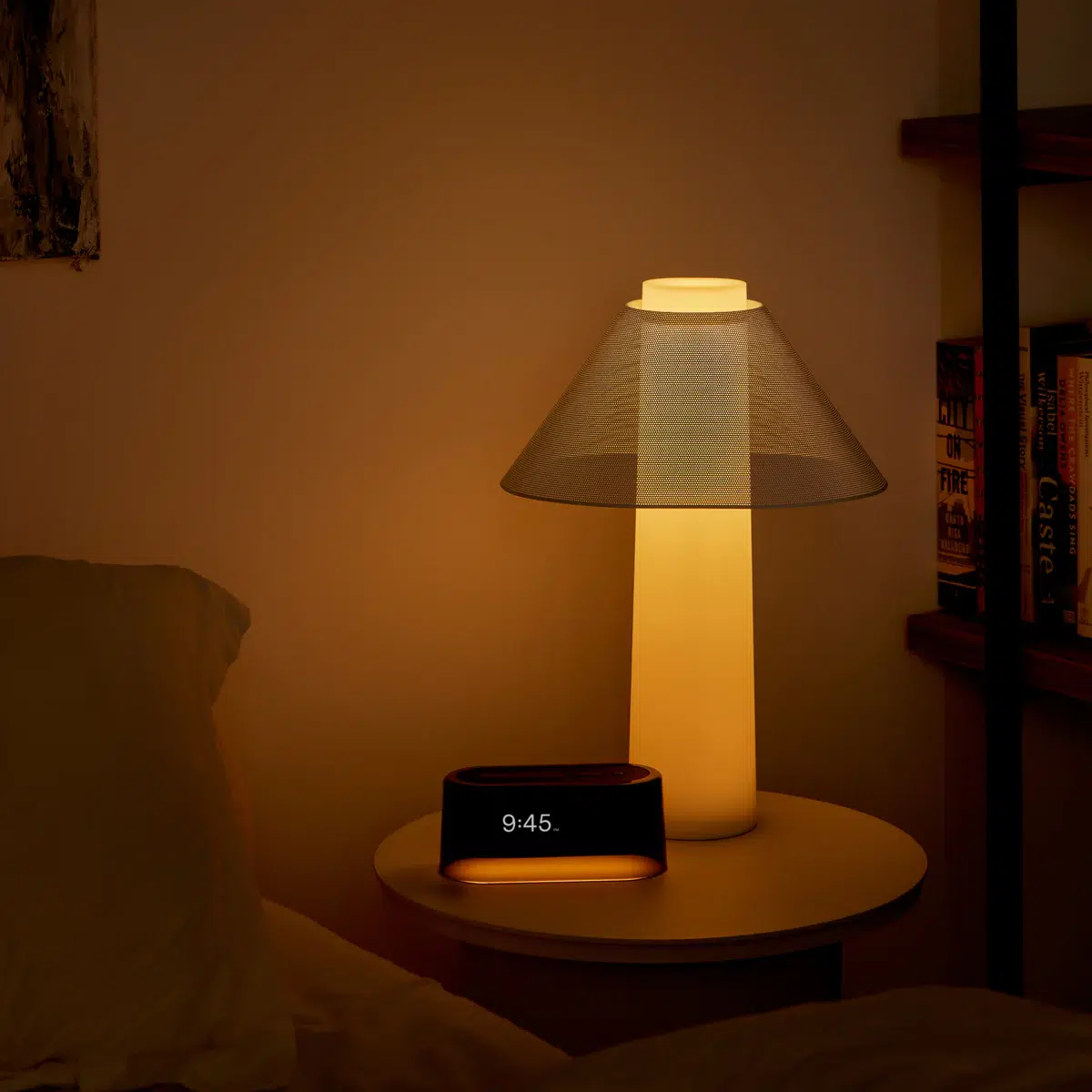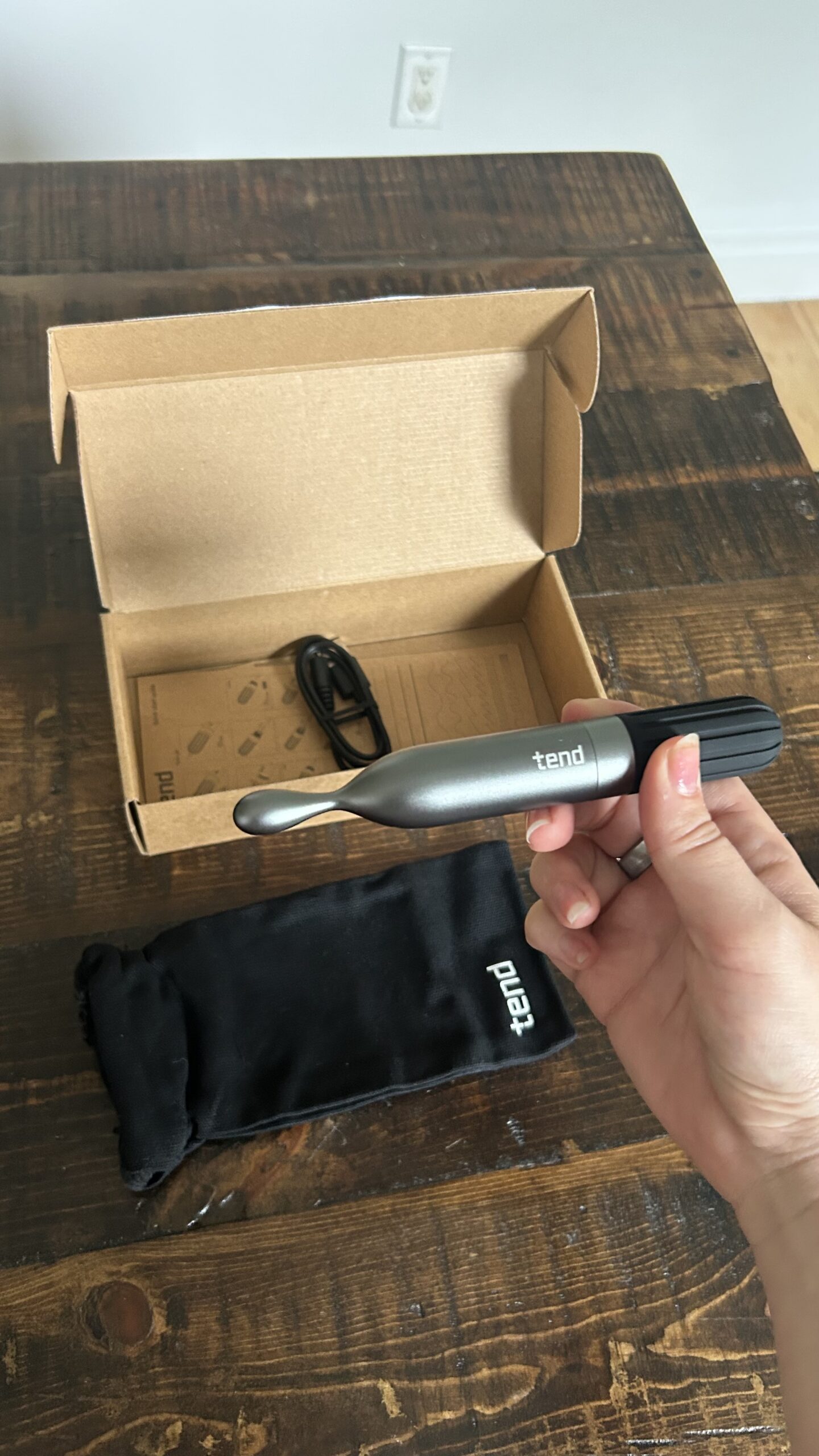
Does A BlueAir Air Purifier Help My Air Quality In A City Apartment?
Good Gear editors endorse products we’ve personally researched, tested, and genuinely love. Learn more about our methodology and business model here.
GOOD GEAR RATING — 8/10 STARS
Summary: The Blueair 2-in-1 Purify+Humidify DH3i has made a noticeable difference in my apartment’s air quality, cutting down on dust and keeping humidity at a comfortable level — even with LA’s pollution and a pet in the mix. It’s quiet, easy to use, and genuinely helps me breathe easier, though the regular maintenance can be a bit of a hassle (and costly to replace filters). Overall, I’m impressed with how much fresher and cleaner my space feels since adding it to my home three months ago.
PROS
- The display is easy to read, and the controls are simple. Overall, the design is appealing!
- I get real-time info about the particulate matter in my space, which helps me make decisions like when to mask up during home projects, and it’s fun to watch the purifier work to bring hazardous air to a safer level. Plus, I love looking at the filters and seeing just how much visible dust and dander the filter gets.
- The automatic functioning helps me keep my room at a comfortable level, both air quality-wise and humidity-wise.
CONS
- The initial price tag is high ($429.99), but in my opinion, you get a lot of power for that price. However, for best results you’ll want to replace both the filters (three of them) and the humidifier wick every six months — which costs about $75.
- I really don’t need another app! While the app is free and not required for this purifier to work, I don’t love how everything these days wants to connect to my wifi.
- Standing at 26” high, the unit is bigger than my previous air filters. If you don’t need a 2-in-1, Blueair also offers smaller units with similar filtration!
My apartment is one of my favorite places in the world — I reside in a 1930s streamline moderne building in a lively, walkable, and diverse community. I truly feel like I found one of LA’s unique gems, and plan to stay for the long term. But there’s a cost to wherever you live, and outside of the steep rent, I also deal with less-than-ideal air quality inside my home thanks to the soot and dust that all the traffic kicks up. Add in a cat and my propensity for walking barefoot in and out of the house? Yeah, it’s dust central over here.
For the first three years of living in this space, I relied on three small air purifiers to keep the dust to a minimum (they never really felt like they were working, although cleaning out the filters would tell you a different story).
But after the devastating fire season in January 2025, I wanted to upgrade to a more powerful unit that would help me understand my air quality even better — so I turned to Blueair.
“After the devastating fire season in January 2025, I wanted to upgrade to a more powerful unit that would help me understand my air quality even better — so I turned to Blueair.”
I’ve long known about the brand as an award-winning standout in their field, creating innovative and powerful home air filters that are easy, effective, and seamless integration into your home. This time, I was extra motivated to find the perfect balance for my Los Angeles apartment, which led me to the brand’s 2-in-1 Purify+Humidify DH3i model.
I’ve used my purifier now for three months in three separate rooms (in one-month intervals) to test whether or not I can truly tell the difference and I must say — it’s been a fun, fascinating deep dive into what impacts my air quality, and how long it takes to dissipate to a healthier level. I even ran my Blueair purifier in my bedroom while I was painting the walls for a separate review on zero-VOC paint just to see how it reacted (spoiler: it wasn’t the paint that had me putting on a mask, but the sanding down of walls).
Here’s how Blueair has helped me breathe a little easier in the past three months!
First impressions & unboxing
My Blueair purifier came packaged efficiently, without a lot of extra cardboard, and weighed under 15 lbs on delivery so I didn’t have any issues moving it around my apartment. When I unpacked it, I took the plastic off of each filter before I could operate the unit which is pretty standard practice for any other air filter I’ve ever used in the past.


Setup is pretty easy, just make sure you take the plastic off the filters before running!
Standing at 26” high, this bad boy is certainly the tallest purifier I’ve ever had (at least twice the height of my others), but it’s a pretty sleek looking unit and doesn’t stand out too much from my decor. I definitely appreciate the handles on the sides, so that when I do have to move it I don’t have to bend over and hold the whole unit — it’s as simple as pick and place.
The features on the DH3i are impressive, and I started familiarizing myself with the help of the included quick-start guide. Here’s a look:
- HEPASilent™ Filtration means that you get better efficiency at a lower noise rate (depending on your fan level, you’ll get between 24-52 dB with this unit — roughly the sound of rustling leaves or a whisper at its quietest, and moderate rainfall at its loudest.) You can even activate night mode for a dimmed display and whisper-quiet functioning.
- The InvisibleMist™ Technology of the humidifier delivers mist-free, balanced humidity without white dust or residue. My former humidifiers look like rock candy, so I was excited about this.
- The smart features of the device include wi-fi connectivity, app integration, auto mode, humidity and air quality monitoring, cleaning scheduling, and Alexa voice control integration.
- The UV-Powered Water Pump helps inhibit bacterial growth in the water tank, which is also easily fillable and is dishwasher safe!
- The device has an Asthma & Allergy Friendly® Certification — meaning it’s been independently tested and certified for reducing airborne allergens and improving indoor air quality.
As a sneak preview of the later parts of this review? I’m pleased with all of these features (except the app — can we have a device without its own app??).
For this particular model, I didn’t expect a whole-house pristine clean. The 2-in-1 Purify+Humidify DH3i device is only optimized for rooms up to 360 sq feet — for its size, I may have expected it to cover more square footage. It does work in larger rooms, just not at the same air filtration recommendations set out by the Association of Home Appliance Manufacturers when it comes to speed, power, and filtration.
“The 2-in-1 Purify+Humidify DH3i device is only optimized for rooms up to 360 sq feet.”
(For those of you, like me, interested in what that even means: The AHAM recommends a filter that can clean the air four times every 12.5 minutes; the larger the room, the longer it takes to do a complete clean. It still works, just not as fast!)
Since I live in an apartment, I don’t actually have any room that is larger than that, but it’s still good to know in case you have a more expansive space!


My air got significantly more polluted when I was sanding my walls before painting — these pictures are taken five minutes apart, which shows you how quickly the Blueair hopped into action to clean. The particulate matter spiked to over 60, and after those five minutes my purifier displayed it was back down at a more reasonable level of 16.
Setup was straightforward, and filling the humidifier tank is…dare I say it…actually fun? When the device is off and the screen is locked, you can just pour water directly into the top without having to open up and remove the tank. It feels a little like you’re breaking the rules. 😆

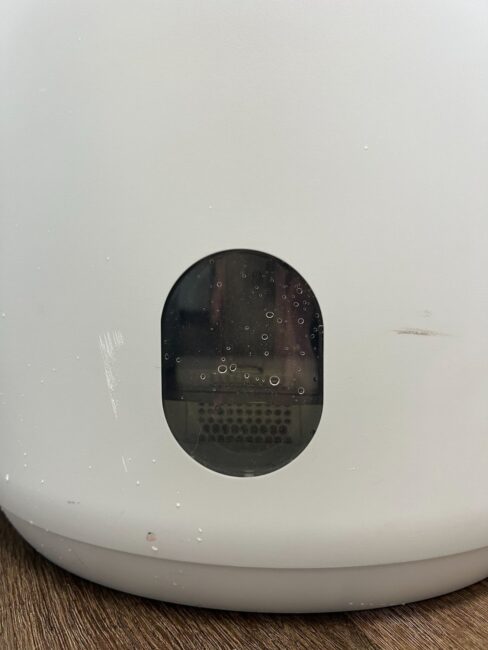
You can fill the humidifier tank from the top or by removing it (it’s dishwasher safe, btw!). There’s also a little window to see how much water you have left, but the app and device will let you know when it’s time to refill, too.
My biggest gripe is that if you want to get data on your air status, easily set cleaning schedules, or to receive real-time updates about humidity levels and filter lifespan status, you have to get the app. And honestly, having apps for everything is really obnoxious — I have two apps for lights, an app for my air purifier, my robot vacuum, my laundry, two meditation/neurofeedback devices, my “phone-free” alarm clock, my water filter, DSLR camera, Apple watch…it’s all frankly out of control.
“My biggest gripe is that if you want to get data on your air status, easily set cleaning schedules…you have to get the app.”
No more apps, please. They’re as obnoxious as the free tote bags that come with everything. I don’t need more.
And if that’s not enough, please enjoy the security requirements for the password: “Password must contain at least 10 characters and 4 of the following: An uppercase letter, a lowercase letter, a number, a special symbol.” 💀
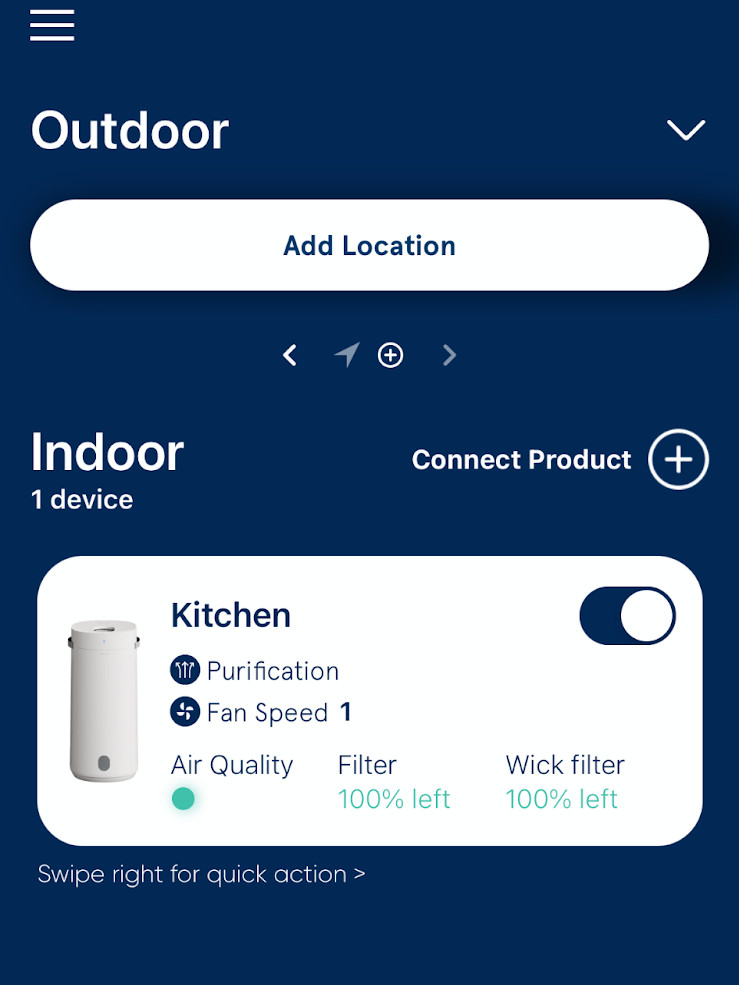

Here’s a look at the app! For as much as I don’t need another app, I find this one intuitive and helpful.
But, Emily, does the Blueair purifier work?
Okay, okay, you’re probably wondering how — and if — the Blueair actually works.
My first hope for this purifier was to reduce how much dust gathers on surfaces in my apartment. After using the device in my living room, bedroom, and dining room/kitchen for one month each I have noticed a significant reduction in what accumulates! I dust less frequently, and see less dust floating in the air when the sunlight is beaming into my space.
“I dust less frequently, and see less dust floating in the air.”
While the dust isn’t gone entirely (I wouldn’t expect it to be), I still feel so much joy when I check the filters of my Blueair and see how much less “junk” I’m breathing in or having to otherwise clean up.


I noticed even small movements, like opening the curtains, would spike the particulate matter measurement. I’m going to start washing my curtains more regularly, that’s for sure! Before I opened the curtains, the pm 2.5 level was at five, and two minutes later it spiked to 49. The Blueair brought it back down within ten minutes, though!
The second hope was to generally keep me safer and healthier on a day-to-day basis. Since I’ve had the Blueair, I haven’t had any congestion issues! As far as the humidifier aspect goes, I’ve also noticed that I wake up less dehydrated, and my pesky dry nose that happens in the winter and spring of each year has become more manageable. This may be TMI, but I get a lot of scabbing in my nose and some bloodiness in the dryer seasons.
Anecdotally, when I moved the Blueair from my bedroom to the kitchen, my partner declared within ten minutes that the air felt easier to breathe. (Plus, I was running a dusty fan and the Blueair clocked the PM 2.5 pollutants immediately at a 20+, and within those same ten minutes it had dropped to less than 5.)
“When I moved the Blueair from my bedroom to the kitchen, my partner declared within ten minutes that the air felt easier to breathe.”
It is worth mentioning that Blueair’s measurement of PM 2.5 pollutants may differ from other air purifiers — the Mila, which I also have, displays air quality instead of specific measurements. I’ve noticed that the Blueair display measurement is much more sensitive to particulate matter like dust, drywall, and dander, while the Mira is more sensitive to things like candle smoke, having the oven on, and open windows. At the end of the day, though, I’ve found that both work exceptionally well in making my rooms feel cleaner and more comfortable, and fumes from cooking and outside pollutants are significantly reduced.
Ongoing and long-term maintenance of Blueair
To be honest, I am a poor caretaker of anything in my home — except for living beings. The maintenance of this device is not overboard, but it does also require some attention.
“The maintenance of this device is not overboard, but it does also require some attention.”
Since it’s a humidifying device, the manual says to clean the wick filter once a week using water, and to deep clean it you’ll need to soak it in citric acid mix for an hour, then rinse (the website says to use 20g of citric acid for every 1L of water). So — while there’s UV technology for killing bacteria, you’ll still need to at least rinse the wick filter once a week for optimum performance. Add it to my chores list, I guess?
But beyond the humidification aspect of this device, you’ll be directed to replace the air filters every six months. Since there are three HEPA filters, this can get quite costly. The brand does offer a subscription, pay-as-you-go model for a discount — here’s the price breakdown:
- Three 2-In-1 Purify + Humidify Replacement Filters, $49.99 for a one-time purchase, $42.49 for subscription, whether you choose three, six, or nine months. (The recommended rate of replacement is every six months.)
- One 2-in-1 Purify + Humidify Replacement Wick, $24.99 for a one-time purchase, $21.24 for subscription, whether you choose three, six, or nine months. (The recommended rate of replacement is every six months, but clean it weekly.)
My move is to vacuum off the visible debris from the filters I have, but I’m realizing that might be destroying them sooner than necessary. In light of this knowledge, moving forward, I’ve decided to dry-wipe my filters with paper towels so as to not disturb the filters.
You can see the pictures below, of both my Blueair and Mila filters so you can get a sense for how dusty my space is — the first photos are after one month (which is before I cleaned them with a light vacuum — not ideal).


Here’s a look at what I captured in just one of the Blueair’s three filters after a month of use (the white filter) and the Mila (the green filter) — I had them running simultaneously in varying parts of the apartment.
The next photos (below) were taken two months after the previous cleaning. While I’ve learned that vacuuming is not the right approach for continuing to capture microparticles, I’m still getting lots of visible debris in my air filters. So, to preserve the life and efficacy of my filters, I am taking a dry paper towel to the outside of the filters once a month to make sure they can continue to pull in the most noticeable pollutants. I know that filtration of the smallest particles may reduce after the six-month timeline (like airborne contaminants, including particles containing viruses like the one that causes COVID-19).


These are the same filters after three months (I even vacuumed them once — that’s how much dust I’m dealing with!!)
Final thoughts
At the end of the day, I can smell and breathe the difference after using the Blueair 2-in-1 Purify+Humidify DH3i for three months. I wake up with less congestion, and fewer instances of dry, bloody noses since the smart humidifier keeps me at a consistent level of hydration and purification.
“I wake up with less congestion, and fewer instances of dry, bloody noses since the smart humidifier keeps me at a consistent level of hydration and purification.”
I brush off larger contaminants like dirt and dander from the outside of the filter every month or so, but I also know that these filters will start losing their maximum effectiveness after around six months (I’ll probably replace the filters every nine months, to be honest, to save money).
It’s MUCH better than having nothing, especially on a busy Los Angeles street corner, and the noise at its max fan speed and efficacy are well worth the investment — just be aware that you’ll be prompted to replace everything every six months.
If you have allergies or other sensitivities (especially in households with pets), Blueair filters can offer a respite for you. These purifiers will never “heal” allergies, but they may make experiencing them a little more tolerable; at the end of the day, it comes down to what risks you’re willing and, especially ABLE, to navigate. From my experience as someone with non-life-threatening allergies (but a whole lot of dust and dander), the house gets a lot more breathable when you have appropriate filtration like the Blueair 2-in-1.
Emily McGowan is the Editorial Director at The Good Trade. She studied Creative Writing and Business at Indiana University, and has over ten years of experience as a writer and editor in sustainability and lifestyle spaces. Since 2017, she’s been discovering and reviewing the top sustainable home, fashion, beauty, and wellness products so readers can make their most informed decisions. Her editorial work has been recognized by major publications like The New York Times and BBC Worklife. You can usually find her in her colorful Los Angeles apartment journaling, caring for her rabbits and cat, or gaming. Say hi on Instagram!

